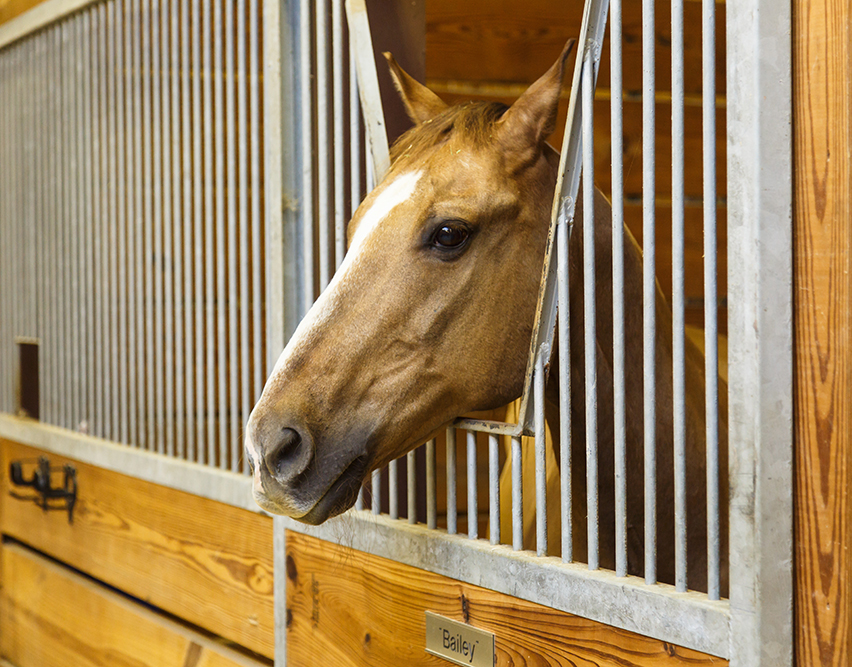Digestive Shield™
Shield Your Horse from the Inside Out
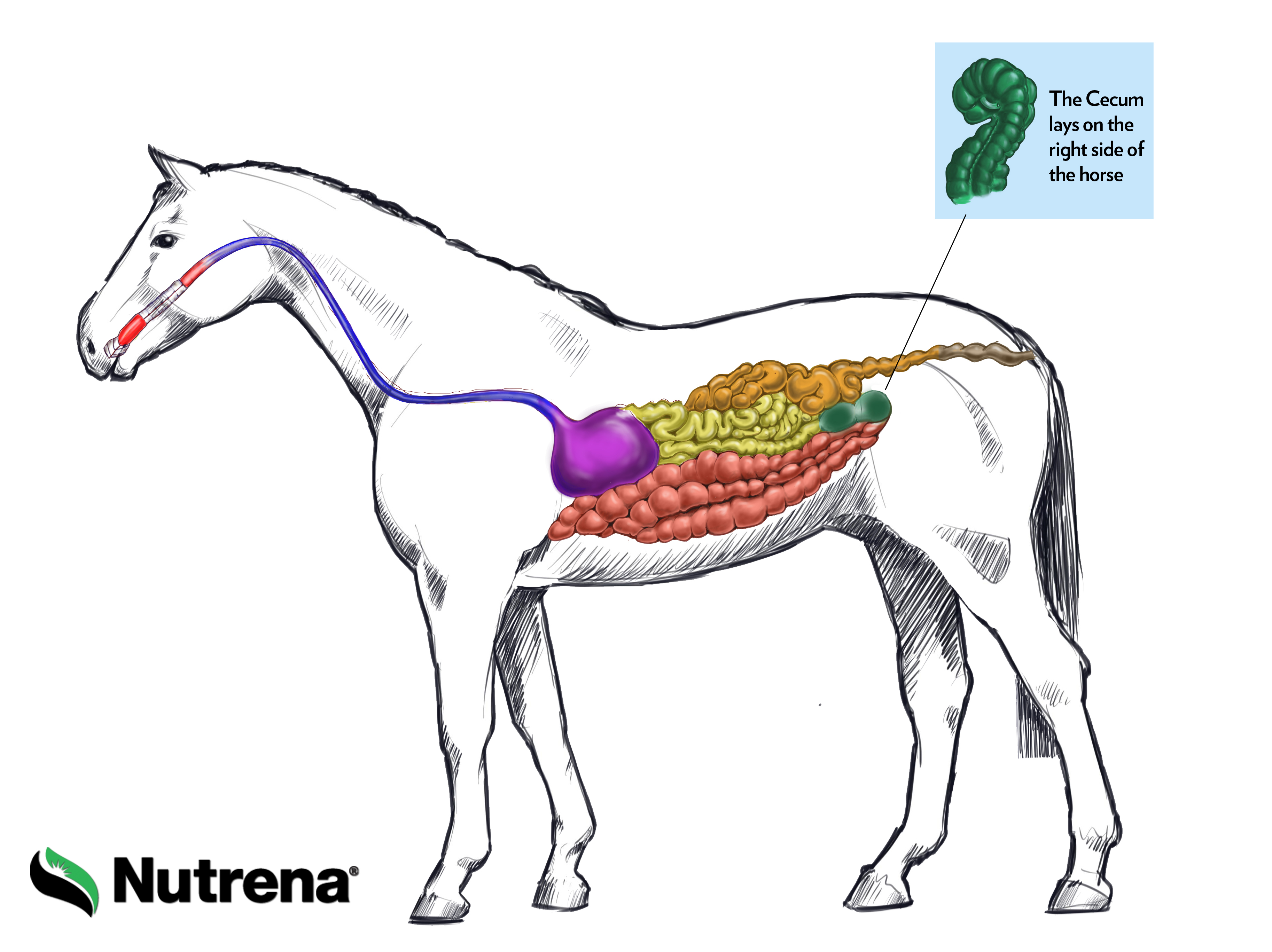
Understanding a Horse’s Gut Health
Why Is Your Horse’s Gut Important?
Maintaining a balanced digestive system is critical to overall horse health. The digestive tract, or “gut,” of the horse is responsible for breaking down (digesting) and absorbing nutrients found in feedstuffs. The microbial population within the gut also plays a role in producing key vitamins. And by some estimates, the gut is responsible for 70% of the horse’s immune system. Gut health refers to both the integrity of the gastrointestinal tract and the balance of microorganisms that live in the digestive tract.
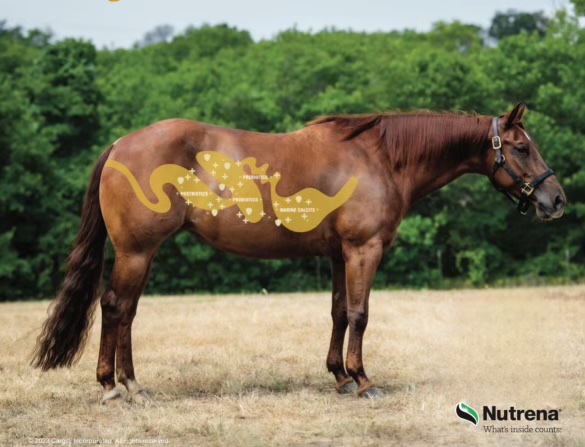
How Are Microorganisms and Gut Health Related?
Microorganisms live symbiotically in the horse’s digestive system. Mostly concentrated in the hindgut (cecum and large intestine), these microorganisms break down the fiber in feed and hay. This is done by deconstructing complex molecules to release the nutrients and allow the synthesis of energy substrates and important vitamins. Those nutrients are then absorbed through the intestines into the bloodstream, where they become available to cells in the body to support maintenance, growth, and activity.
Gut microorganisms include bacteria, protozoa, fungi, and even viruses. The specific combination of organisms acts as a unique ecosystem within the horse. You may also hear this balance of microorganisms referred to as a “healthy microbiome,” or “healthy gut flora.” When the populations of microorganisms in the gut are balanced, the horse can achieve maximum nutrient digestion from its forage and feed. When they are unbalanced, the horse’s immune, digestive, and other systems can be affected.
Situations such as rapid changes in diet, training, stressful events such as long trailer rides, or prolonged antibiotic use can result in disruption of the normal balance of microorganisms. This imbalance can result in poor nutrient absorption, loose stools, or even colic. Further, in a balanced gut, the microbiome and mucosal layers act as a barrier to prevent harmful bacteria (pathogens) or substrates that a horse ingests from entering the bloodstream. If the gut balance is upset, this protection system starts to fail, and pathogens can negatively affect the horse.
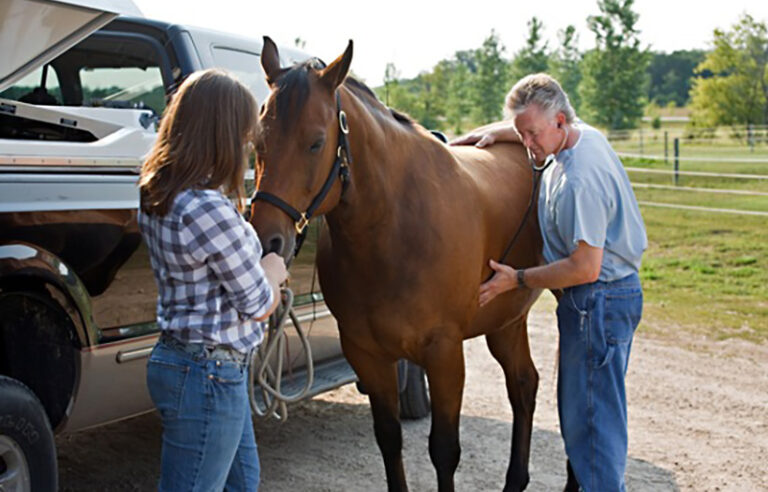

What Are Signs a Horse’s Gut Health Is Off Balance?
While there is no one foolproof method, there are some signs that something may be wrong with a horse’s gut balance. Gastric ulcers may present as horses being unwilling to eat (particularly concentrates), being “cinchy” or reactive to being saddled, or resistant to being touched/brushed, or as behavioral problems under saddle. Horses lacking a good body condition, or horses that suffer from frequent colic, diarrhea, or a suppressed immune system, may have an imbalance in the microbiome. It’s important to note that each horse has a unique microbiome as well, so just as in humans, one horse may have a more easily upset gut-flora balance than another.
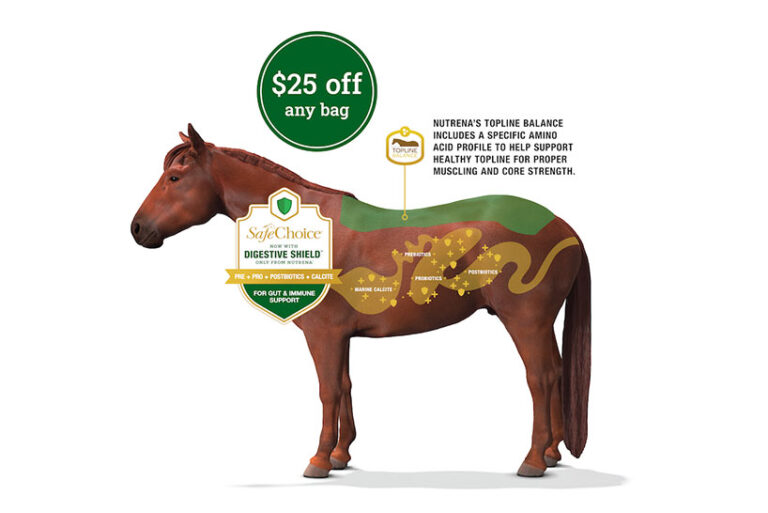
Why Digestive Shield is the Answer
What is Digestive Shield?
Digestive Shield is a new technology, exclusive to Nutrena, that addresses gut health from end-to-end with a unique combination of controlled starch, Calcite and Pre + Pro + Postbiotics. Digestive Shield is one more way Nutrena continues to work to promote the health and well-being of horses. To better understand how Digestive Shield works to protect horses from the inside out, let’s look at the components.
FAQs About Digestive Shield
-
What is Calcite?
As the horse eats, food passes first into the stomach. The stomach is designed to serve as a mixing vat and begins the digestive process through the addition of strong acids to the food mixture. Because horses were designed to eat continually, they produce stomach acid, not just after meals. When horses are instead meal fed or go extended periods without food, this stomach acid on an empty stomach can be problematic. Normally, when grazing, horses produce a great deal of saliva that tends to buffer stomach acid. However, if grazing/chewing is reduced, saliva production is also reduced, and stomach acid can get out of hand. One problem that can occur as a result is ulceration of the stomach lining, known as gastric ulcers. Some estimates suggest that up to 25% of horses may have ulcers, but horses under stress may have even more ulcerations with incidence estimated as high as 90%1.
One approach to preventing gastric ulcers is the use of buffering agents to help increase the pH of the stomach between meals. Calcium in the diet is a natural buffering agent, however, studies have shown that a marine-derived calcium, known as Calcite, has up to 2x greater buffering capacity when compared to calcium carbonate normally used in horse feeds2. Calcite’s greater buffering capacity can be attributed to its more porous surface area.
In addition to helping buffer in the stomach, research has also shown a beneficial buffering effect of Calcite in the horse’s hindgut (cecum and large intestine)feeds3. In times of extreme stress or illness, the horse’s hindgut can experience a rapid decline in pH, known as acidosis. This acidic environment can be damaging to the microbial population, cause inflammation in the gut, and initiate a cascade of damaging effects for the horse. Helping to buffer or maintain hindgut pH, then, can help keep the horse’s hindgut functioning normally.
-
What are Prebiotics?
These are the nutrients that beneficial bacteria eat – in other words, “the fuel” for the “good bugs.” Prebiotics help stabilize the population of microorganisms when, for example, there are sudden changes in a horse’s diet, which helps to reduce digestive upset. They can stimulate the growth and activity of beneficial microorganisms, which benefit the horse by enhancing the absorption and retention of certain nutrients. Promoting “good” micro-organisms can also help keep populations of less desirable microbes in check, a concept known as competitive exclusion.
The prebiotic used in Digestive Shield comes from chicory root. Chicory root is broken down into a prebiotic known as inulin. Inulin is particularly beneficial to the horse as it is not digested in the stomach or small intestine allowing it to make its way to the microbes of the hind gut.
-
What are Probiotics?
These are living microorganisms — “the factories” — that can be added to a horse’s diet to help balance its gut flora population. Providing more beneficial bacteria has been shown to increase nutrient digestibility and shift the balance of microbes in a positive way. Probiotics in Digestive Shield include beneficial strains of Lactobacillus, Enterococcus, Bifidobacterium, and Bacillus. In laboratory research the Bacillus subtilis included in Digestive Shield has been shown to inhibit harmful bacteria including Clostridium difficile, Rhodococcus equi, and Streptococcus equi.4 These pathogens can cause digestive issues as well as severe respiratory infections, so any ability to inhibit their growth can be beneficial. To be effective, cultures in a probiotic must be alive. In some cases, the processing of Probiotics destroys the cultures. Probiotics in Digestive Shield have been tested to ensure they remain viable after pelleting.5 Probiotics can be measured on a feed tag by the measure of Colony Forming Units (CFU) per pound of feed declared on the tag. In general, the higher the CFU/lb. level, the better, as long as you are comparing similar strains and products of equal stability. Understanding the value of specific strains, such as the inhibitory effects of Bacillus subtilis can also be useful as not all probiotic strains play the same role.
-
What are Postbiotics?
When yeast and/or bacteria are fermented outside the animal they create biproducts known as metabolites that can have beneficial health effects. A postbiotic is the combination of inanimate microorganisms, both intact and cell wall fragments/structures, and their metabolites that when fed back to an animal confer a health benefit. Postbiotics are often considered “the goods” if the microorganisms themselves are the factories. While microorganisms within the animal certainly produce “goods” in the form of volatile fatty acids (an energy source), vitamins, and more, fermentation of yeast and bacteria outside the animal creates a unique profile of metabolites. These metabolites when consumed in the feed as Postbiotics then serve as signaling molecules for a variety of physiologic functions including enhanced immune response. The signaling molecules can also support other microbes to further stabilize the microbiome.
-
What is Controlled Starch?
Controlled Starch and Low Starch are two different things, and they are intended to be.
Controlled Starch means that we guarantee maximum sugar and starch levels on our feed tags, so horse owners know exactly what they are feeding in every scoop. Until SafeChoice pioneered Controlled Starch formulas in 2003, many feed companies did not guarantee maximum sugar and starch levels on their feed tags.
While SafeChoice pioneered the starch and sugar trends over a decade ago—it has never focused on being the “lowest” starch and sugar feeds on the market. What the SafeChoice products deliver is the control, and the options for horse owners to choose feeds with the proper starch and sugar content for their horse and their needs.This is on purpose because horses require different levels of Non-Structural Carbohydrates (NSC) depending on their activity level, metabolic conditions, etc. SafeChoice horse feed ranges from 10% NSC in SafeChoice Special Care to 25% NSC in SafeChoice Maintenance.
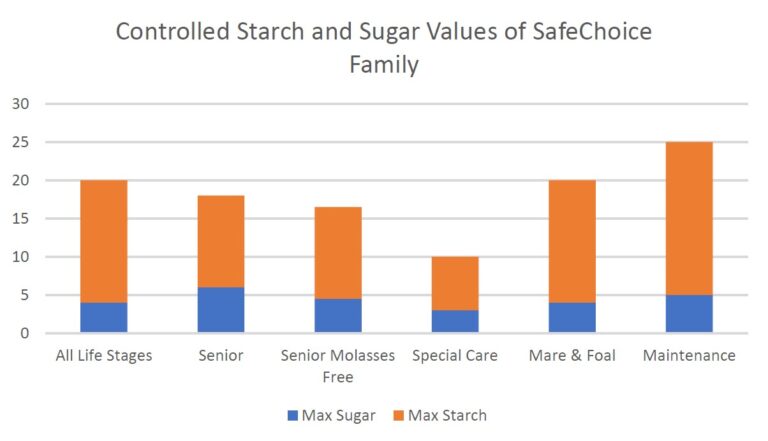
Sources
1 Sykes, B.W., et al. “European college of equine internal medicine consensus statement—equine gastric ulcer syndrome in adult horses.” Journal of Veterinary Internal Medicine 29.5 (2015):1288-1299.
2 Moore-Colyer, M., et al. “An in vitro investigation into the effects of a marine-derived, multimineral supplement in simulated equine stomach and hindgut environments.” Journal of Equine Veterinary Science 34.3 (2014):391-397
3 Liburt, N., et al. “Effect of a marine-sourced calcium on fecal pH in horses.” Journal of Equine Veterinary Science 100 (2021):103531.
4 Burke, M.L., et al. “Bacillus subtilis strain PB6 demonstrates growth inhibition toward equine-specific bacterial pathogens.” Journal of Equine Veterinary Science 58 (2017):84-88.
5 PrimaLac Study #SL-01-1. April 2003. PrimaLac Pet DFMs Remain Stable Through the Heat and Pressure of Extrusion. Star-Labs/Forage Research Inc. P.O. Box 601, St. Joseph, MO 64506. USA.
Try Digestive Shield for $25 Off
Enhanced with Digestive Shield
-
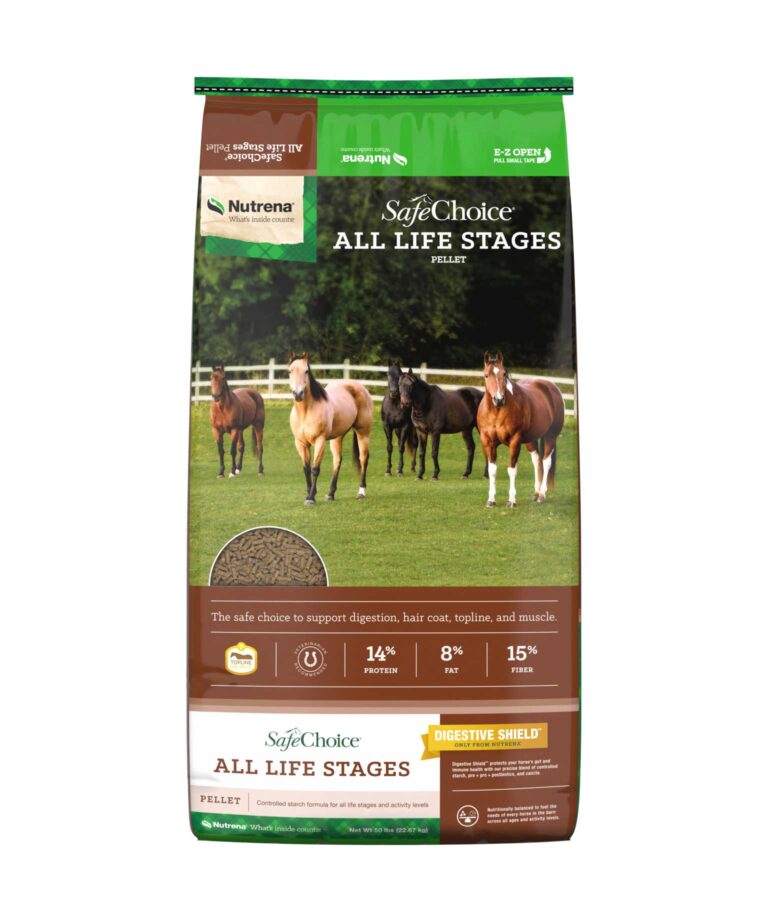 SafeChoice
SafeChoice
All Life Stages
14.0% Crude Protein15.0% Max Crude Fiber8.0% Crude FatNutritionally balanced, controlled starch formula for all life stages and activity levels including performance horses – now with Digestive Shield™Learn More -
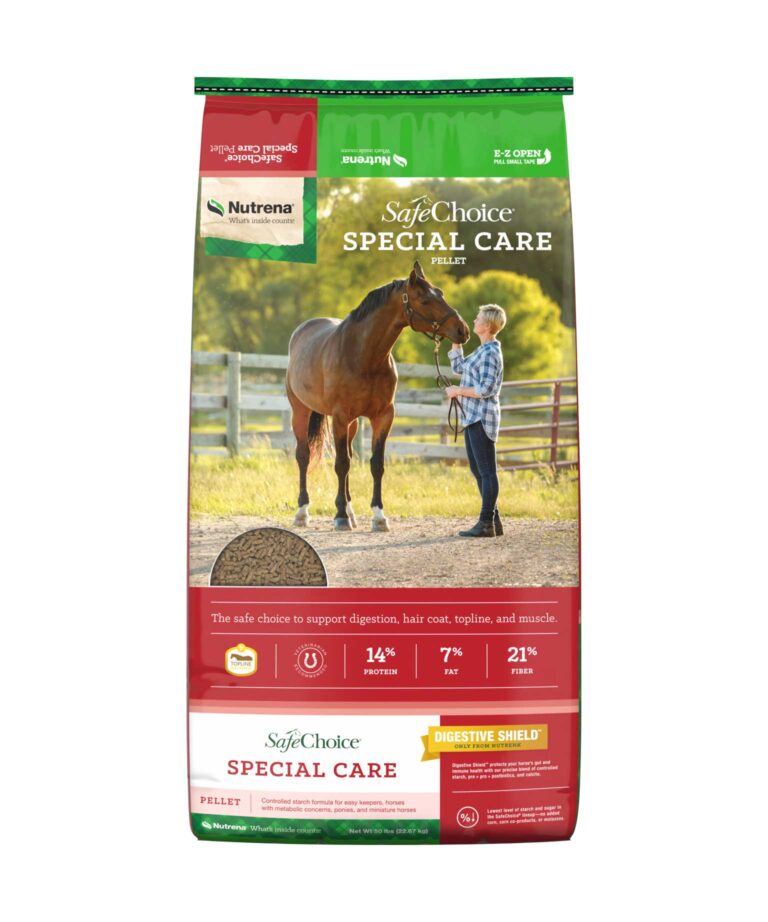 SafeChoice
SafeChoice
Special Care
14.0% Crude Protein21.0% Max Crude Fiber7.0% Crude FatLow controlled starch formula with only 10% NSC for horses with metabolic concerns and easy keepers – now with Digestive Shield™Learn More -
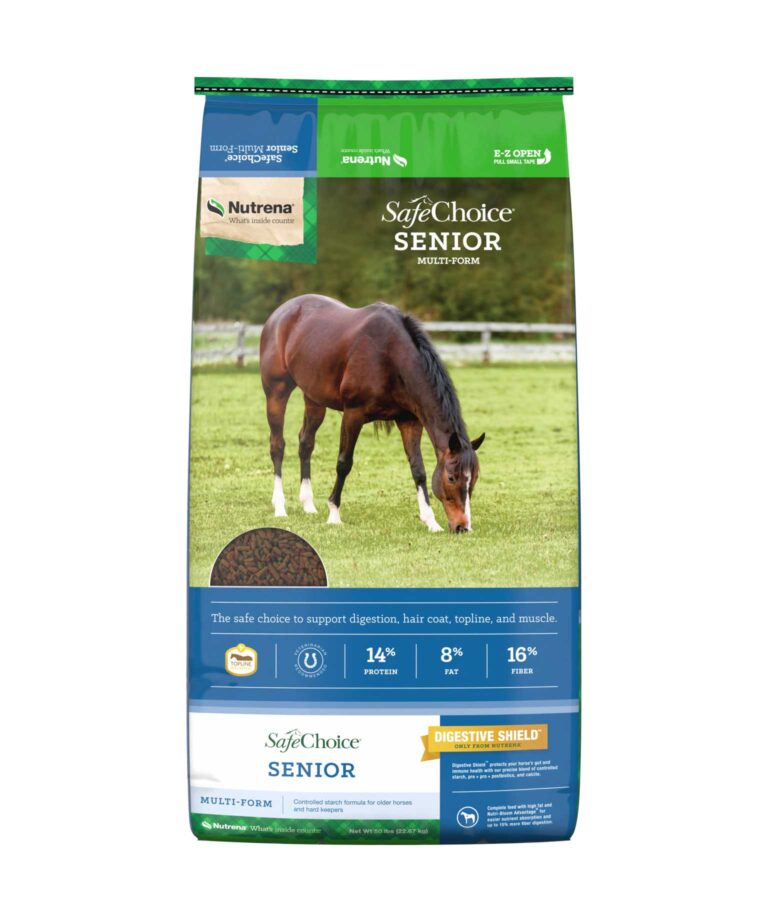 SafeChoice
SafeChoice
Senior
14.0% Crude Protein16.0% Max Crude Fiber8.0% Crude FatHigh fat and controlled starch formula designed for the unique needs of performance horses, hard keepers and older horses – now with Digestive Shield™Learn More
-
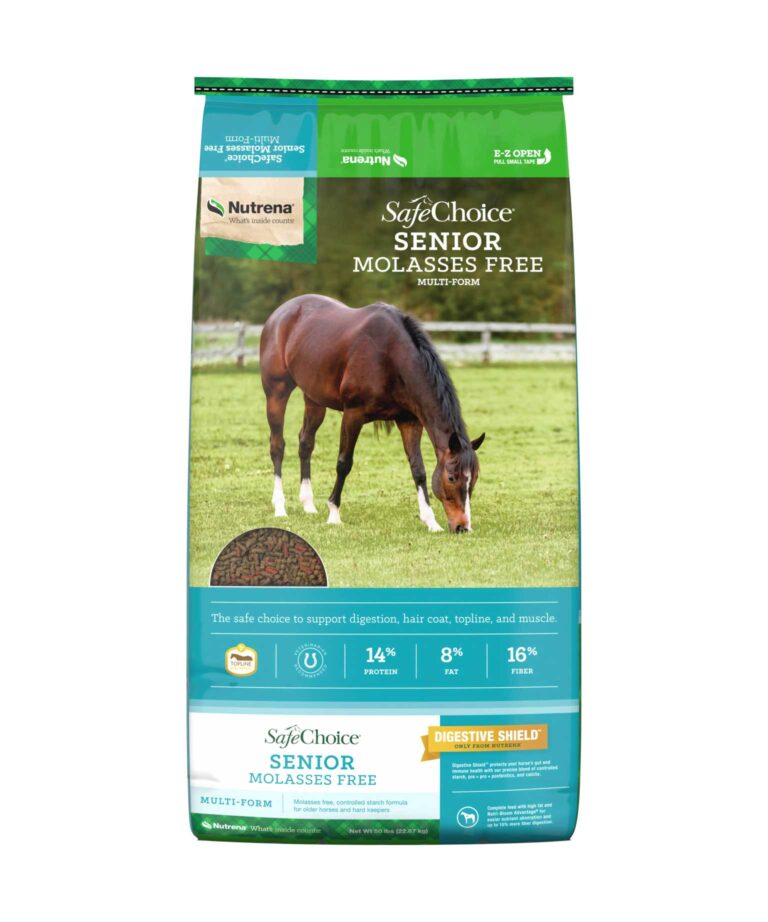 SafeChoice
SafeChoice
Senior Molasses Free
14.0% Crude Protein16.0% Max Crude Fiber8.0% Crude FatSpecially designed, molasses-free formula with high fat, controlled starch, and key ingredients for older horses – now with Digestive Shield™Learn More -
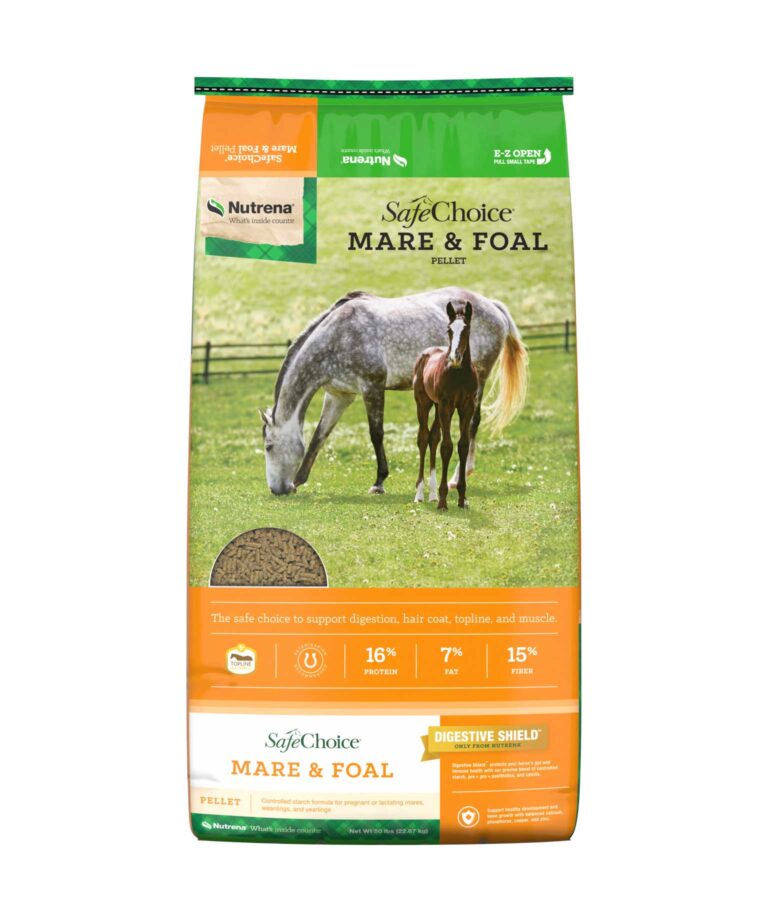 SafeChoice
SafeChoice
Mare & Foal
16.0% Crude Protein15.0% Max Crude Fiber7.0% Crude FatA controlled starch pelleted formula for pregnant or lactating mares, weanlings, and yearlings – now with Digestive Shield™Learn More -
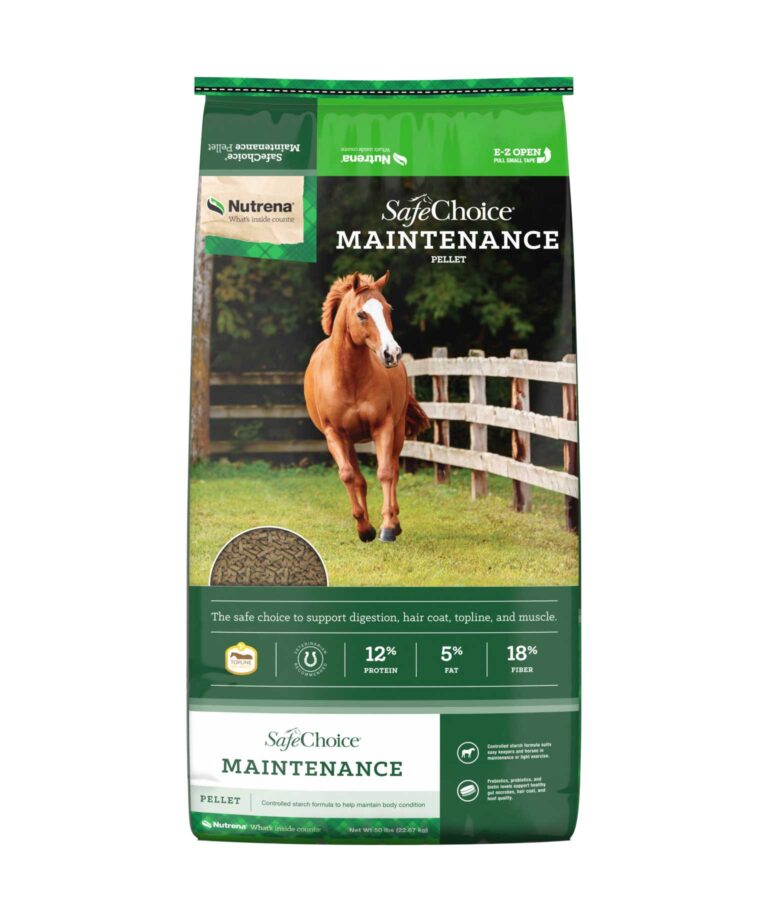 SafeChoice
SafeChoice
Maintenance
12.0% Crude Protein18.0% Max Crude Fiber5.0% Crude FatControlled starch formula to help maintain body condition, best suited for maintenance or light exerciseLearn More
-
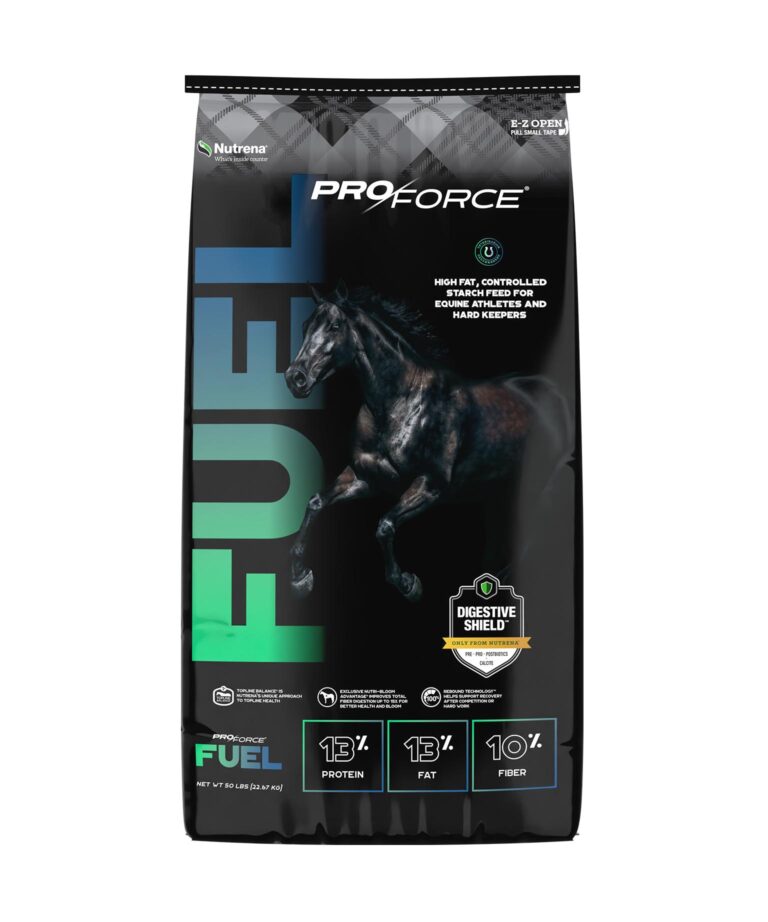 ProForce
ProForce
Fuel
13.0% Crude Protein10.0% Max Crude Fiber13.0% Crude FatHigh fat, controlled starch feed for equine athletes and hard-keepersLearn More -
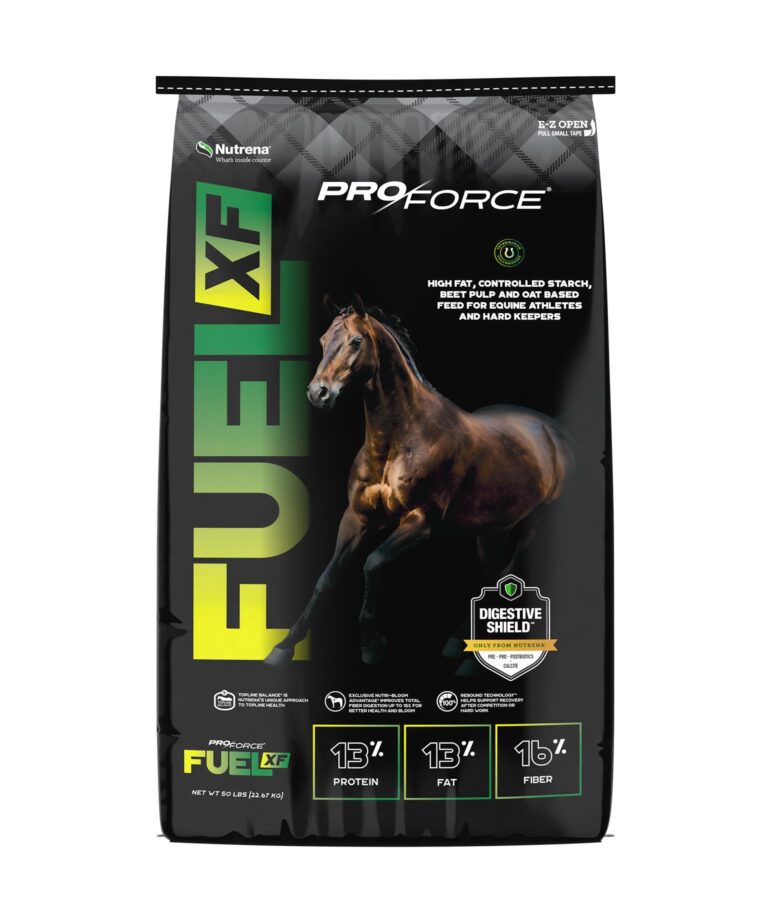 ProForce
ProForce
Fuel XF
13.0% Crude Protein16.0% Max Crude Fiber13.0% Crude FatHigh fat, controlled starch, beet pulp and oat based feed for equine athletes and hard keepersLearn More -
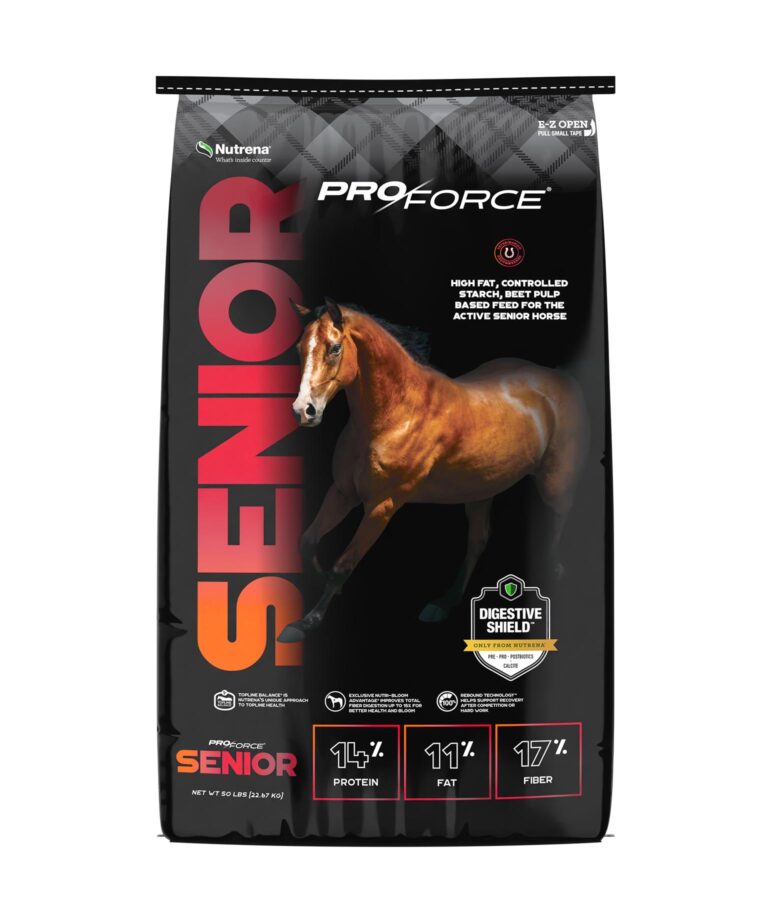 ProForce
ProForce
Senior
14.0% Crude Protein17.0% Max Crude Fiber11.0% Crude FatHigh fat, beet pulp based complete feed for the needs of active senior horsesLearn More
Get a FREE Consultation
Fill out our Contact Us form for an equine nutrition expert to provide 1-on-1 recommendations for your feeding program.



